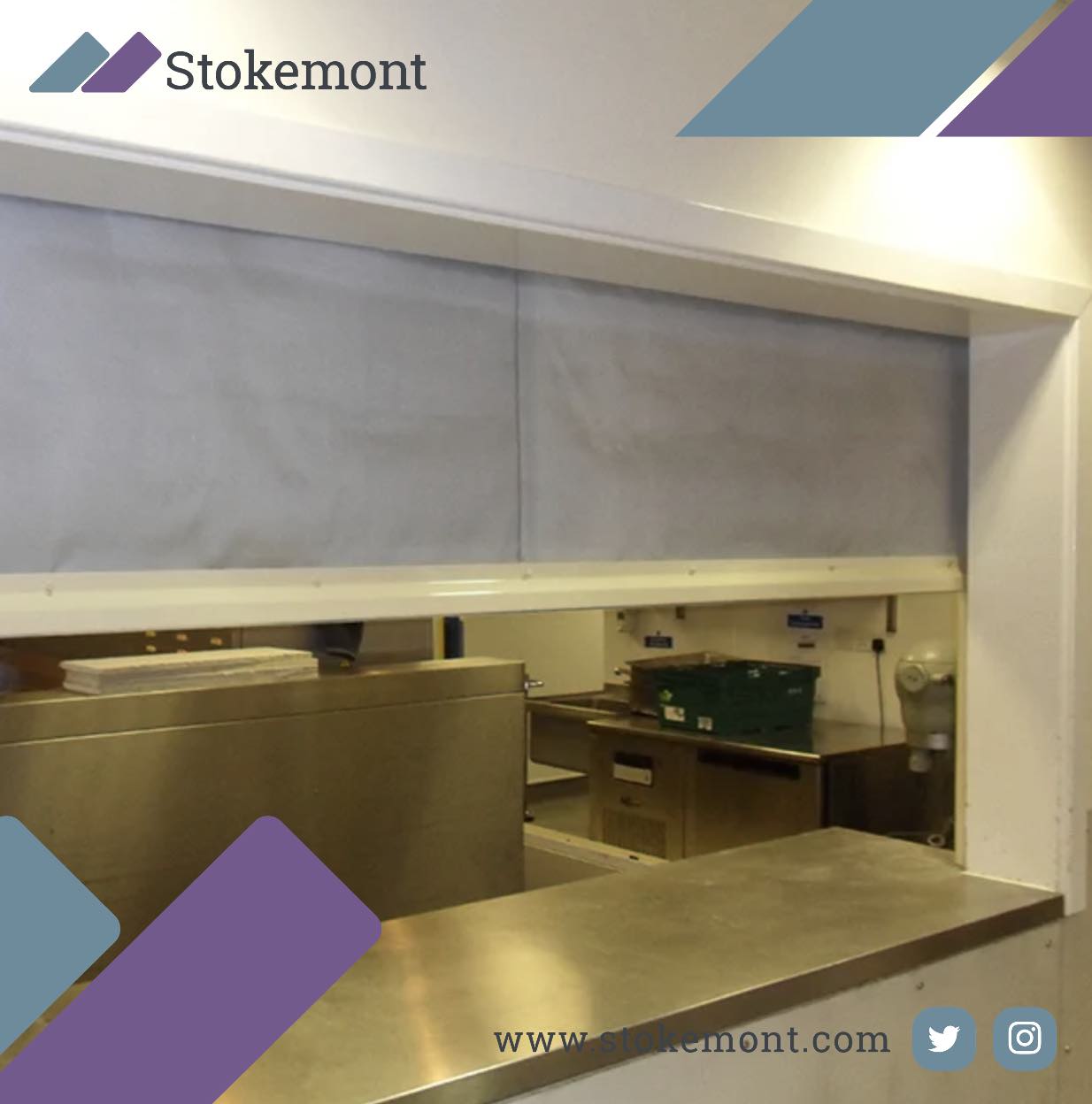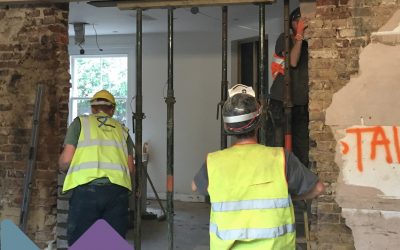In this week’s surveying blog, we will be looking at Fire Curtains, the need for them, and the benefits associated with the install.
What exactly are Fire Curtains?
The Fire Curtain was first seen in a British theatre in 1794 at the Theatre Royal, Drury Lane, this was at the time historically made of iron and was installed to prevent a spread of fire out into the audience from the performances which took place on stage. A fire curtain is an addition to already existing fire barriers that allow access to fire escapes, generally designed to reduce the spread in open spaces of fire, heat, smoke, and toxics between different zones in a building by attempting to box off the raft for a longer period of time.
The material utilised is highly heat resistant in its form, historically, the common materials utilised have been heavy-duty iron and currently the go to is fibreglass. Asbestos implemented curtains were also historically used, at least up until the discovery of the lung implications were widely known in relation to the fibres within the material.
When it comes to the installation of Fire Curtains, they are usually discreetly stored in a steel head-box within the ceiling in a flush fashion so it doesn’t sit proudly and jump out and ruin the ascetics of the space.
In light of a fire, the sensors and triggers which would be fitted during the install would prompt the heavy Fire Curtain to immediately release downwards from the head box thus sectioning off specific areas within the open space, creating a barrier that would slow and spread of fire, smoke and the toxics. This in turn allows much more time for individuals to safely find the fire exits.
What are the benefits of a Fire Curtain?
Fire Resistance
The champion material of today commonly used for its resilience would be Fibreglass. Fibreglass is robust in its form and its resistance to heat can be further enhanced by being intertwined with metals. Generally speaking, fibre glass materials are reliable as a material of toughness and are commonly used on flat roofs of structures or yacht hulls and other types of Boat hulls as it’s also very watertight. However, the key point to note is that the material is fire resistant and not fireproof. Unfortunately, as it stands, no material is fireproof. A fire-resistant material is simply better at withstanding thermal energy and direct exposure to flame for longer lengths. The most severe risk to occupants in a fire is excessive inhalation of gas, smoke, or toxic fumes which can be reduced by containing the spread of fire and protecting evacuation routes with the implementation of fire-resistant barriers into a building’s design.
Usability
Fire curtains are somewhat flexible in their usability, they can be installed in several different locations and can be used to replace a non-load bearing wall or areas which lack a natural fire barrier. For example, In open-plan layouts, from residential homes to large commercial spaces, the installation of a fire a number of Fire Curtains in this regard enables a building to still meet the relevant building regulations.
To put this in perspective, unlike fire doors, Fire Curtains can be installed in a number of different locations including where there is a lack of walls to slow the spread of a potential fire. Moreover, areas and utilities such as lifts, lobbies, and staircases, which are usual routes to fire exits, can also benefit from Fire Curtains to help reduce the rapid spread of a fire and the toxins associated, thus providing individuals a greater chance of a successful escape. Given that Building regulations require escape routes to be adequately protected, with any openings such as doorways or lift openings, that does not happen to have a fire-resistant barrier, a Fire Curtain can be installed, thus lowering the risk of further potential fire, smoke, and toxics spreading into designated escape routes.
The key thing to take into account is that Fire Curtains and Fire Doors are designed to serve three main purposes :
- Protect the access to escape routes.
- Limit the initial development of a fire.
- Prevent the rapid spread of fire, smoke, toxics.
Modern Adaptability
Most modernly built properties of today are of an open plan living design, as this is the preferred utilisation of space of our times. Moreover, newly built commercial spaces will also benefit from wide-open spaces rather than being closed off by multiple portion walls. In this regard, generally speaking, to reduce the rapid spread of fires, a building must be divided into sections to be fire safe, as this by default creates fire-resistant barriers, which would include implemented elements such as fire doors.
When it comes to modern open plan spaces, boxing off sections can cause obvious issues in regard to accessing an adequate amount of fire doors due to the absence of walls. Developers, designers, or building owners who want to renovate their property who would like to have a more open plan building design, Fire Curtains can be utilised as the product solves this problem, where fire doors cannot be implemented, Fire Curtains can be installed. Once the triggers and local detectors are made aware of a possible fire, the Fire Curtains will fall from above and section off parcels of the open spaces just as partition walls would have as a default, however the Fire Curtains will do a much better job. Also the installation allows unrestricted vision and movement across the space during normal building use.
Furthermore, Fire curtains can be installed in several different locations and can be used to also replace a non-load-bearing wall and fire-rated glazing. Lastly, In open-plan layouts, the installation of a fire curtain enables a building to still meet the relevant regulations.
Increased Safety
Fire Curtains can come equipped with vision panels which are an exceptional benefit for fire services first responders in light of fire outbreaks. For this reason, it said that there is a growing global demand for the ability to see through a curtain. Vision panels save precious time during a fire outbreak by allowing the fire services and other individuals to see through the curtain panels, in dying moments this could assist in saving lives. In an emergency, timing is very critical A Fire Door, Fire Curtain or alternative barrier without a panel/window may reduce the first responder’s ability in doing their job due to the inability to be conversant about risk on the other side of the barrier.
If you would like to discuss fire curtains, or other forms of fire defence with our team of RICS Chartered Surveyors, feel free to give us a call today and we will be more than happy to advise.




